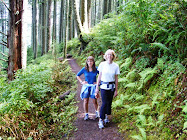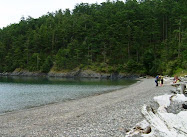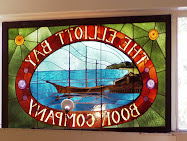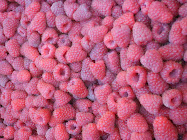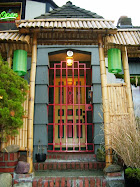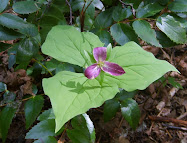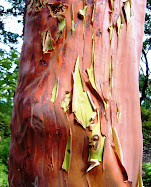 This is the second post about an early September backpacking trip in Glacier National Park. Read the first post here.
This is the second post about an early September backpacking trip in Glacier National Park. Read the first post here.
On this second day of our trek, we hiked through a stark, glacially carved landscape where mountains meet the sky. After a relatively easy first day, this second day was more challenging, but the payoff was absolutely worth it.
After packing up and leaving No Name Lake by mid-morning, my hiking buddies Mark and Andy and I hiked up switchbacks a couple miles to Dawson Pass (elevation 7,600 feet) on the Continental Divide. For this lowlander (I live about 300 feet above sea level), I actually didn't feel the elevation that much.
Along the way, we passed above timberline into a dramatic landscape of shale and scree (Mark, who has a geology degree, would describe the rocks/formations more precisely).
 |
| Approaching Dawson Pass, Two Medicine Lake behind and below. |
Wildfire smoke blew in and tamped down the dramatic views, a minor downside on an otherwise spectacular day hiking. We'd been warned about the winds at the pass, and sure enough, as we crested the pass, wind raced across, prompting us to pull out windbreakers when we stopped for lunch.
 |
| Windy Dawson Pass. Mark Beaufait photo. |
 |
| Smoke obscured the views on the other side of Dawson Pass |
After lunch and hiking up a few hundred feet above the pass, the real drama of the day began. I'd read about the relatively narrow ledge portion of the trail that skirts beneath Flinsch Peak, but I didn't realize this narrow goat trail (or so it seemed) continued over 3 miles.
 |
| The trail continued past and around the backside of the second peak in the distance. |
Let's be clear: The trail was pretty exposed in some places, where a misstep on the loose scree could lead to an unstoppable fall/slide down a 3,000 foot mountainside. Have I mentioned that although I like being in high places, I'm not a big fan of heights?
But onward we trekked because, of course, there was no going back. A couple times rock steps on the trail were so tall that it was a challenge to step up with a heavy backpack (once with an assist from Andy). And some wind gusts were so strong that I was pushed sideways and had to stop to steady myself.
 |
| We passed beneath the glacial horn of Flinsch Peak shown here. M. Beaufait photo. |
 |
| One of the widest stretches of the ledge trail. M. Beaufait photo. |
 |
| The trail at times. M. Beaufait photo. |
Walking the ledge for that distance required complete focus with every step, at least for me. But the views, even with the smoke, wow! I felt a sense of expansive space, like being in an airplane and looking around and down at the world below.
 |
| Starting the descent down to Oldman Lake, our destination for the night. |
 |
| M. Beaufait photo. |
As we neared Oldman Lake, we passed through big scarlet patches of low-lying huckleberry bushes heavy with sweet ripe berries. We also passed some very large piles of berry-infested bear scat; we'd heard from other hikers that grizzly bears had been spotted near the lake and even wandering through our upcoming campsite.
While black bears aren't that scary to see, grizzlies are another matter. Fortunately the bears decided to forage elsewhere that night. Perhaps they were scared off by our pack of hikers (nine of us) at the campsite, most of us from Seattle.
 | ||
| Oldman Lake | |
A rustic gray-bearded, solo man (trail name, Stormwalker) showed up at camp later than the rest of us and told us he'd done many epic thru hikes since the 1970s (Pacific Crest Trail, Appalachian Trail, the Continental Divide Trail (CDT), Nepal, New Zealand...). On this outing, he was seeking CDT thru hikers to give them advice and $2 bills. In some parts, that's still good for a cuppa (not Seattle).
 |
| Evening light at Oldman Lake. |
Fellow hikers we met at our two campsites were all fun, friendly, and engaging. Maybe that's partly why I'm drawn to the outdoorsy. We swapped stories and laughs in the designated cooking areas (away from our tents to deter bears) and then wandered off to our tents as it got dark.
Perhaps the grizzlies were hunkered down due to the persistent strong wind, with occasional big gusts. Who knows. But regardless of the bear factor, I slept well again. Being "good" tired makes for good sleep.
Just too many more photos to share to cram them all into this post, so check back in a couple days for the third and last post of our backpack trip on the Dawson/Pitamakan Passes Loop.
Happy trails and thanks for visiting Pacific Northwest Seasons! In between blog posts, visit Pacific NW Seasons on FaceBook, Twitter, and Instagram for more Northwest photos and outdoors news.
















































